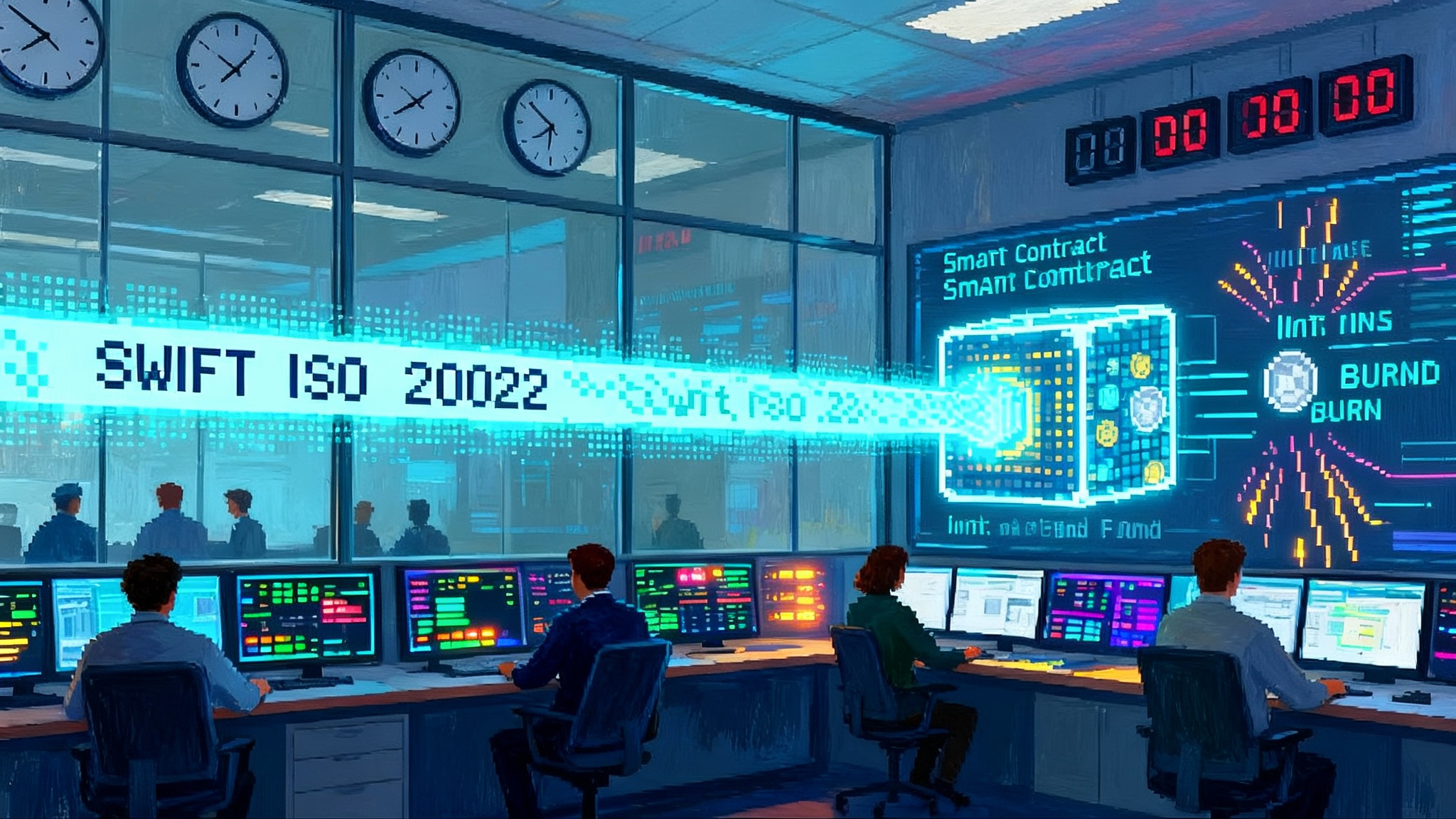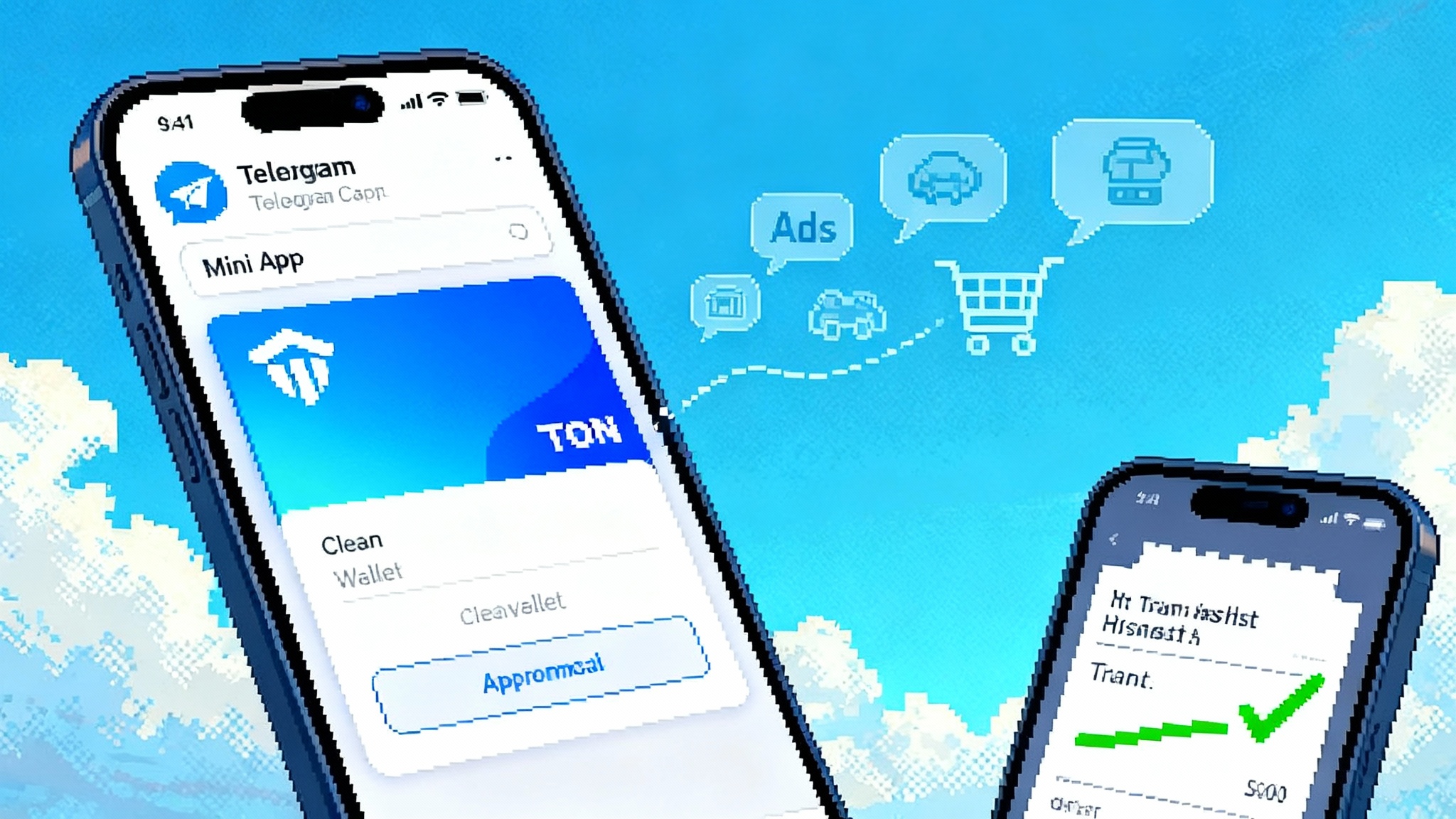Uniswap’s DUNA shift primes the era of protocol fees
Uniswap Governance adopted a DUNA legal wrapper called DUNI, giving the DAO real legal personhood. Here is how that shift unlocks protocol fees, reduces liability for contributors, and sets a template other DAOs will copy in 2026.

The week DAOs grew up
In September 2025, Uniswap Governance voted to wrap itself in a legally recognized structure called a Decentralized Unincorporated Nonprofit Association, or DUNA. The new entity, dubbed DUNI, gives the world’s largest decentralized exchange governance real legal personhood for the first time: it can sign contracts, hold assets, hire service providers, and file taxes. The Uniswap Foundation laid out the details in its proposal and materials, making clear that onchain votes remain binding while DUNI handles offchain execution and liability protection for members. This reset is not cosmetic; it paves a workable route to the long-debated fee switch and a more mature phase of onchain governance. See the foundation’s overview of DUNI for the primary source materials and purpose in the DUNI overview and documents.
For the last four years, protocol fees were stuck in a governance limbo. The technology existed. The community was often aligned on turning them on. The sticking point was accountability: who exactly would collect fees, pay taxes, sign agreements with auditors or custodians, and assume legal risk if something broke. In the absence of a legal wrapper, the DAO looked too much like a general partnership, which meant potentially unlimited liability for active participants. The DUNA model changes that, providing limited liability and a statute-recognized association that respects onchain decisions as real-world instructions. That is the bridge from code to contracts.
What legal personhood changes in practice
The easiest way to understand DUNI is to picture a public library that is run by a community vote. The community decides which books to buy. The library card and catalog are onchain. But someone still needs to rent the building, hire a security guard, negotiate insurance, and sign for the fire inspection. Before DUNI, tokenholders were the ones implicitly standing at the lease counter. With DUNI, the library has a legal front door.
Here is how that changes the lives of the three groups who matter most.
Builders and vendors
- You can sign a contract with Uniswap Governance, not just the Uniswap Foundation or a patchwork of third parties. That matters for audits, incident response retainers, bug bounty administration, data providers, custody trials, insurance cover, and cloud infrastructure credits. Vendors who previously hesitated can now treat DUNI like any other counterpart that can accept liability-limited terms and pay invoices on time.
- DUNI can issue requests for proposals and evaluate them using clear criteria approved by governance. It can also enforce service-level agreements. That predictability is oxygen for serious infrastructure providers who need to justify multi-year commitments to their boards.
- The DAO can authorize administrators to execute ministerial actions, like filing returns or onboarding payroll for contributors. That reduces both legal ambiguity and coordination tax for teams shipping code.
Liquidity providers
- You finally get clarity on the tax and accounting flows that accompany protocol fees. If governance toggles a fee on certain pools, a registered association can collect, account, and remit taxes where necessary. Previously, any nontrivial fee capture raised questions about who would be liable for what. That uncertainty discouraged fee experiments and pushed LP strategy into informal side deals or opaque incentives.
- A legal wrapper also allows the DAO to contract with risk managers and analytics firms to monitor pool health, oracle dependencies, and cross-chain liquidity conditions. For LPs who manage capital at scale, risk transparency can be worth more than a few basis points of raw return.
- Expect better disclosure around fee toggles. DUNI can require dashboards and standardized reporting for any pool subject to protocol fees. That gives LPs a clean way to compare net returns after protocol take, and to voice with capital if a setting is not working.
Tokenholders and delegates
- DUNI is a nonprofit association, so it cannot distribute profits like a corporation would. That means no dividends to tokenholders. Value accrues indirectly: by funding development, audits, liquidity programs with measurable objectives, or even buybacks that are tied to services or treasury management rather than profit distribution. The point is prudence and defensibility, not yield for its own sake.
- Liability protection matters. Active governance participants can take bolder positions on budgets and fee experiments without treating every vote like a personal balance sheet risk.
- Delegation becomes more meaningful. With DUNI, budgets can be earmarked and governed with precise scopes. Delegates can propose concrete deliverables that DUNI is empowered to sign and enforce, rather than hand-wavy forum posts.
From fee switch to fee program
The phrase fee switch makes it sound like a binary. In reality, Uniswap’s path is likely to be a staged program with tight measurement loops.
- Scope first. Expect governance to start with a subset of pools where the market structure can absorb a protocol take without chasing away depth. Stable pairs and blue-chip routes tend to be more inelastic, but every pool is different. The path forward is not political; it is empirical.
- Keep it light. A common template is to take 1 of every 6 units of the existing pool fee. If a pool charges 30 basis points to swappers, 5 basis points would go to the protocol and 25 to LPs. On a million dollars of daily volume, that is roughly 500 dollars of protocol revenue per day. Scale that across dozens of pools and you are in the tens of millions per year, enough to fund grants, audits, and client diversity without gutting LP incentives.
- Add a flat-fee option where it fits. Alongside proportional takes, a flat-fee parameter at the factory level allows governance to run experiments that reflect different market realities. Thin, volatile pairs may benefit from a lower proportional take. Thick, commoditized routes may carry a modest flat levy without harming user prices.
- Measure, publish, adjust. The most credible fee program looks like a policy lab. Turn on a few configurations. Publish slippage, depth, and volume changes. Compare against matched control pools. Adjust or roll back if the data says so.
The governance unlock is not just the ability to take fees. It is the ability to take fees responsibly, with a legal entity that collects, accounts, and spends with a paper trail that can survive scrutiny. For context on how policy rails can catalyze mainstream usage, see our analysis of the GENIUS Act turning stablecoins into U.S. payment rails.
Unichain as the value router
Uniswap’s native Layer 2, Unichain, changes the fee conversation from a single venue to a network strategy. Uniswap Labs detailed the mainnet attributes and roadmap when it launched earlier this year in Unichain mainnet is here.
Why does Unichain matter for fees?
- Sequencer economics. A portion of sequencer and block-building revenue can be directed by governance. When paired with protocol fees from swaps, this creates a diversified revenue mix that is less sensitive to any single pool’s dynamics.
- Cross-chain fee routing. Liquidity will always live on multiple chains. With DUNI, Uniswap Governance can sign the cross-chain processing and custody agreements needed to safely sweep fees from partner L2s and sidechains into a consolidated treasury, then allocate budgets back out based on measurable impact.
- Alignment flywheel. Builders who launch on Unichain get lower latency and deep access to Uniswap order flow. In return, governance can design grants and incentives that promote volume back to Uniswap pools, raising the base upon which any fee fraction applies. Think of it like a city deciding where to place tolls and where to subsidize bridges so that the whole road network moves more people at rush hour.
As L2s remove training wheels and decentralize their proving stacks, fee design gains new options. For a deeper dive, see how permissionless proofs are hitting L2s.
How value could be redirected across L2s
A credible fee-on roadmap in a multi-chain world leans on a few simple mechanics:
-
Establish a canonical fee-collection contract per chain. This contract accrues the protocol’s share on that chain and exposes standardized read and payout methods. Governance can then authorize claimers that meet security and compliance criteria.
-
Aggregate at the treasury hub. Fees flow at scheduled intervals to a DUNI-controlled hub with audited signers and automated accounting. The hub produces chain-by-chain statements and a harmonized view of program impact.
-
Spend with intent. Instead of a monolithic budget, governance allocates ring-fenced programs: audits for v4 hooks, client development grants, liquidity incentives that are measured in net new depth retention, or security reserves for incident response. Each program has a start and stop condition and a clear owner accountable to onchain reporting.
-
Reinvest in the network. Where Unichain is the preferred venue for high-throughput strategies, sequencer revenue and protocol fees can jointly subsidize features that improve trading outcomes: fair ordering experiments, revert protection, and oracle diversity. Where other L2s are strongest, incentives can target bridges and routers that lower total cost to the end user.
The net effect is to turn protocol fees from a passive skim into an engine that funds reliability, developer growth, and user outcomes.
Playbook for other DAOs
If Uniswap’s DUNI is the template, what should other large protocols do between now and 2026?
- Pick a wrapper you can explain. DUNA is not the only option. Some communities will prefer foundations, associations, or purpose trusts in other jurisdictions. The test is simple: can you tell a vendor or regulator, in one paragraph, what your entity is and what it can and cannot do.
- Map the liability surface before you touch fees. Identify who collects, who tests, who signs, and who certifies. If your fee plan touches fiat banking, clarify how funds move. If it touches taxes, decide who files where, and why.
- Start with narrow toggles. Copy the lab model: a few pools, clear metrics, rolling reports, explicit off-ramps. Do not announce a protocol-wide rake before you have evidence that your smallest pilot is harmless.
- Separate policy from execution. Tokenholders should vote on high-level goals and thresholds. A designated administrator should handle paperwork and vendor management, tightly scoped by the vote.
- Publish a calendar. Quarterly updates that show fee revenue, spend by program, and measured outcomes build legitimacy. Sunsets prevent zombie budgets.
Institutional readiness is rising in parallel. For how legacy finance is already transacting onchain, see how UBS took tokenized fund orders live.
Trade-offs to keep front of mind
- Nonprofit constraints are real. You cannot pay tokenholders just for holding. Trying to launder distributions through clever mechanics invites regulatory heat. Instead, aim for value creation that the token market can recognize: better product, lower risk, faster shipping.
- Compliance is a cost center. Liability protection and contracting power come with filings, audits, and paperwork. Budgets must account for ongoing administration and training so that contributors know what they can promise on behalf of the DAO.
- Centralization creep can happen quietly. Ministers, administrators, and agents are necessary, but they need performance reviews. Rotate roles or require reauthorization votes on a timetable. Publish the decision logs.
- LP reactions will vary. Some pools will comfortably absorb a protocol take. Others will thin out until incentives adjust. Plan actual experiments, not slogans.
Why this likely triggers a 2026 formalization wave
The barriers that stopped large protocols from adopting legal wrappers have been dropping, one by one. Courts and agencies in the United States have been forced to clarify basic questions. Tooling to run compliant onchain treasuries has matured. Vendor ecosystems know how to price risk for hybrid onchain-offchain contracts. Most importantly, Uniswap’s move reduces the social cost of being first. It is easier to tell your tokenholders that you are not reinventing the wheel when the largest DeFi protocol has already put one on the road.
Expect at least three categories of projects to follow.
- Blue-chip liquidity hubs. Automated market makers and lending markets that already generate usage-based revenue are natural candidates. They know exactly where a few basis points could be redirected without breaking the product.
- App-chains and L2s. If you operate a sequencer or control block-building policy, pairing a legal wrapper with a transparent revenue policy is almost mandatory for scaling.
- Multichain governance collectives. Cross-chain treasuries need an entity to own service contracts, custody agreements, or risk insurance. DUNA-like structures fit neatly here.
By mid-2026, this will look normal: onchain votes, legal entities that honor them, fee programs that publish dashboards, and contributors working under contracts that your accountant understands. The romantic myth of a headless organization does not die. It simply gains a neck that can turn toward a problem and sign for delivery when the fix arrives.
What to watch next
Three near-term milestones will tell you whether the fee era is real.
-
A targeted onchain vote that turns on protocol fees in a small set of pools with pre-committed reporting. The key is not the headline number. It is the design of the experiment.
-
A public vendor program from DUNI that covers audits, incident response, and analytics, with signed agreements and published costs. That will show the pipes can carry more than talk.
-
A cross-chain fee consolidator going live, with chain-level statements and treasury rollups that match block-by-block accruals. When that lands, the operational story turns into a financial one.
The bottom line
DAOs are not opting into bureaucracy for fun. They are doing it because the alternative is to leave value on the table and invite legal risk with every serious decision. Uniswap’s DUNA shift gives governance a body that can carry out the will of the token at enterprise grade. It is the difference between a smart contract that can charge a toll and a public works agency that can pave the highway, hire the plows, and publish the budget. When the first fee toggles click on, that difference will be obvious to users, LPs, and builders alike. And by 2026, the blueprints that Uniswap just published will be hanging on a lot of DAO walls.
What to watch next
Three near-term milestones will tell you whether the fee era is real.
-
A targeted onchain vote that turns on protocol fees in a small set of pools with pre-committed reporting. The key is not the headline number. It is the design of the experiment.
-
A public vendor program from DUNI that covers audits, incident response, and analytics, with signed agreements and published costs. That will show the pipes can carry more than talk.
-
A cross-chain fee consolidator going live, with chain-level statements and treasury rollups that match block-by-block accruals. When that lands, the operational story turns into a financial one.
The bottom line
DAOs are not opting into bureaucracy for fun. They are doing it because the alternative is to leave value on the table and invite legal risk with every serious decision. Uniswap’s DUNA shift gives governance a body that can carry out the will of the token at enterprise grade. It is the difference between a smart contract that can charge a toll and a public works agency that can pave the highway, hire the plows, and publish the budget. When the first fee toggles click on, that difference will be obvious to users, LPs, and builders alike. And by 2026, the blueprints that Uniswap just published will be hanging on a lot of DAO walls.








